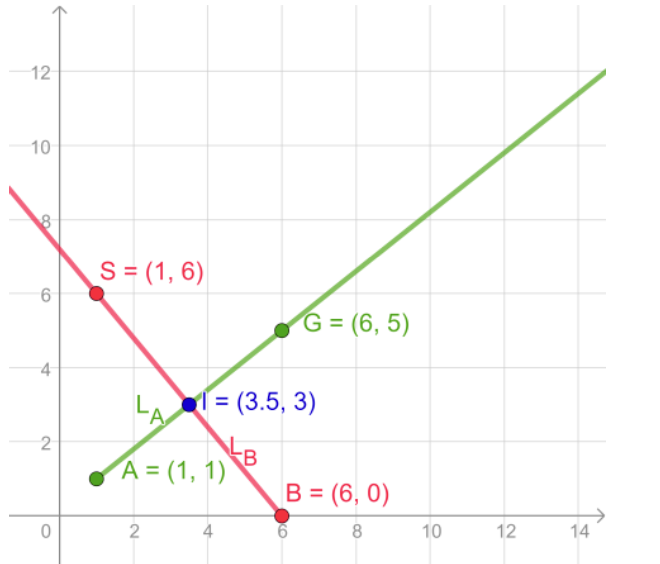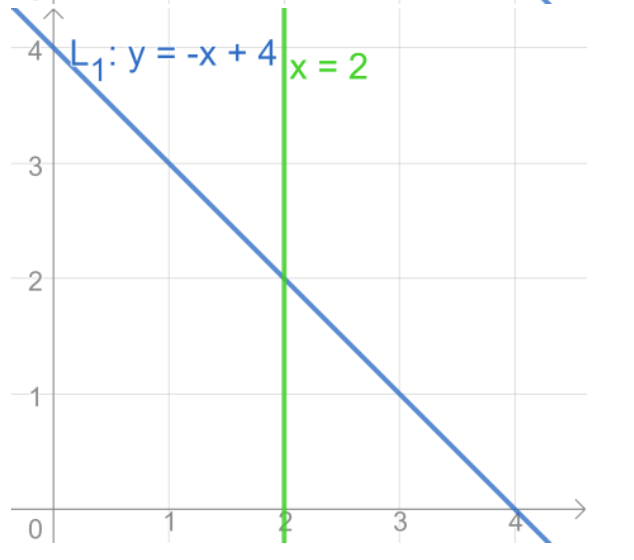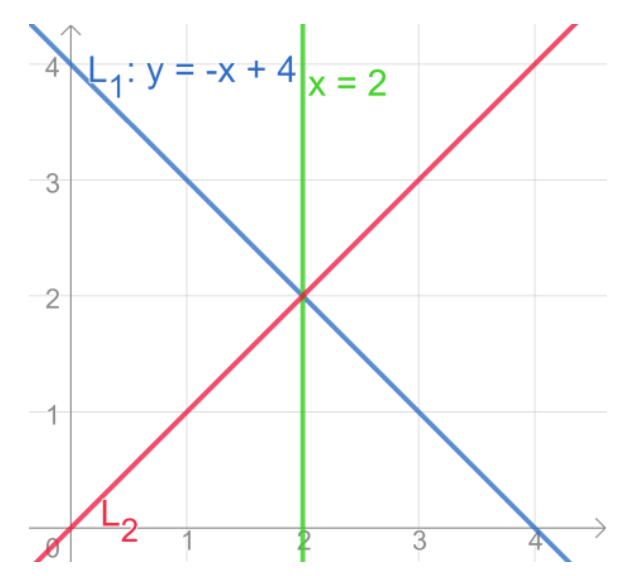Detailed Answer
a) We calculate the gradient: \(\frac{y_2 - y_1}{x_2 - x_1} = \frac{-6 - 0}{4 - 2} = -3\). So the equation has the form \( y = -3x + c \). For the y-intercept, we replace \( x \) and \( y \) in the equation with the coordinates of one of the points: \( 0 = -3 \times 2 + c \), so \( c = 6 \).
b) By finding the unknowns in the previous point we pretty much already found the gradient-intercept form, which is \( y = -3x + 6 \).
c) We can place the two points on a graph and draw the line that connects them. You can also place the y-intercept to help.

d) Parallel lines have the same gradient, so any equation with a gradient of -3 will work, like for example \( y = -3x \) or \( y = -3x + 3 \).
Close











